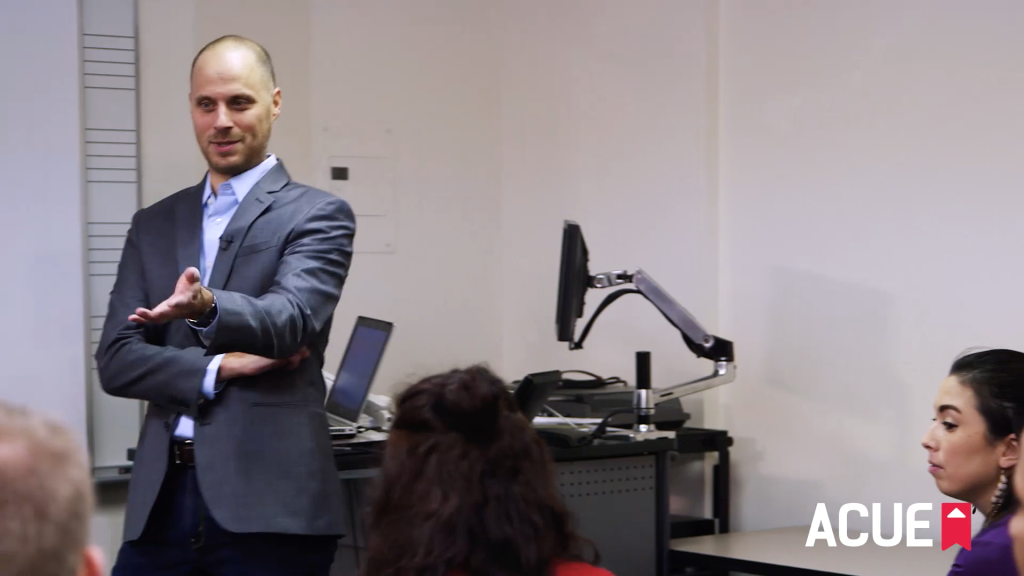
Ensure a Strong Semester With These Strategies
The time between semesters is an opportunity to reflect. How have we been successful during the past semester? Where might we make some adjustments to our courses? Although we may not feel the need to do a full course redesign, even small changes to our teaching can have a significant impact on students’ learning experiences. Here are three practices you might consider implementing to ensure a strong start, paired with quick reads from some of our teaching and learning experts:
1. Use feedback from this semester’s students to inform adjustments to your instructional practices. Consider the responses you received most frequently from students in any solicited feedback—anonymous surveys, Stop-Start-Continue exercise, point-of-view postcards, your institution’s course evaluations, etc.—and informal feedback from speaking with students before/after class and during office hours. Compile a list of patterns in students’ responses, and then prioritize them based on which adjustments can be made and which will have the greatest impact on students’ learning. Additionally, if you kept a journal this semester, look over your notes from each class session to see what changes you might make based on your observations. Both mid- and end-of-semester feedback can be used to guide adjustments given the process of collecting and acting on feedback is similar (i.e., solicit feedback from students, identify common responses, make adjustments, and tell students why you are making or have made certain changes); that’s why our recommended reads include posts on midsemester feedback.
Recommended reads:
• José Bowen: “Using Feedback From Students to Improve Your Teaching”
• Viji Sathy: “The Sweet Spot of Midsemester Feedback”
• Penny MacCormack: “A Metacognitive Approach to Midsemester Feedback”
2. Revise one assignment to make expectations more transparent for students. According to Mary-Ann Winkelmes of the Transparency in Learning and Teaching in Higher Education project (TILT), focusing on the purpose, task, and criteria of assignments “promotes an inclusive learning environment where teachers and students engage in conversations about the relevance of academic work to students’ lives beyond college, as well as expectations for work process and performance.” By making assignments more transparent, students benefit from clearer instructions and from understanding the relevance of course tasks, and you save time assessing their performance. Winkelmes suggests starting small by revising one or two assignments. You can use the transparent assignment template as a guide, and read Winkelmes’s article below to learn more.
Recommended read: Mary-Ann Winkelmes: “Small Teaching Changes, Big Learning Benefits”
3. Prepare a syllabus that gets students excited about learning. As a supplement to your traditional syllabus, consider developing a graphic syllabus as a visual depiction of the relationships between course topics. Linda Nilson states that a graphic syllabus benefits students because “they get an overall big picture of the field, a big picture of the course. Their minds photograph it, so they have a general idea of the shape, the flow, and they follow it like a map. It helps students remember because it gives students a structure for their knowledge.” Alternatively, you might create a big ideas syllabus that lists the major concepts that guide your course and that you want students to remember, with the key assignments and activities aligned to each idea noted underneath. Michael Wesch recommends that you “go back to each of your lectures, for example, and think about ‘What is the actual big idea? What is the change I’m trying to create in my students through this lecture?’ Once you figure that out, you can reimagine everything else, like is that content you’ve been covering necessary for that idea or is there better content?” Resources like a graphic syllabus or big ideas syllabus can increase students’ engagement in your content and their motivation to learn. For inspiration on syllabus redesign, see our recommended read.
Recommended read: Michael Wesch: “What Inspired Me to Redesign My Syllabus”
For more teaching and learning resources, visit our community.


